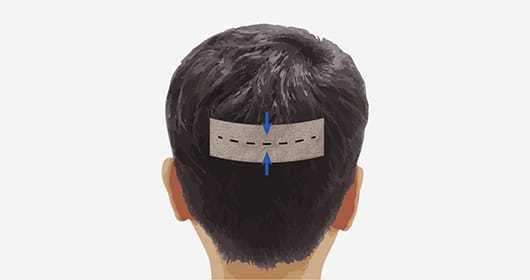
What is Hair Transplantation?
Hair transplantation is a procedure where one's own hair follicles are extracted and transplanted into areas affected by hair loss. More specifically, it involves relocating the follicles that produce hair, rather than the direct transplantation of hair strands. Analogous to transplanting a tree, it can be seen as moving healthy roots. Typically, hair follicles from the back of the head are transplanted to areas such as the hairline or crown that experience hair loss. The back of the head is chosen because it has a higher density of thick hair strands and is less affected by the hormone responsible for hair loss, dihydrotestosterone (DHT).
When hair loss medications or other methods do not yield satisfactory results, hair transplantation can be considered as the most fundamental and reliable solution to improve hair loss.
Hair transplantation is one of the most effective methods to address hair loss issues. It involves extracting one's own hair follicles and implanting them into areas affected by hair loss. Instead of increasing the number of hairs, hair transplantation redistributes existing hair follicles.

hair transplant before & after
You can find detailed transformation processes and procedures at Hairtransplant Realstory Forhair
Hair follicles are typically harvested from the back of the head and transplanted to the areas experiencing hair loss. The back of the head has a higher density and quality of hair strands, and it is minimally affected by dihydrotestosterone (DHT), the hormone that contributes to hair loss. By transplanting healthy follicles from the back of the head, hair can grow in the areas affected by hair loss. Hair transplantation is known as the most effective and permanent solution when other non-surgical methods or hair loss medications are not effective.
However, since hair transplantation utilizes one's own hair, there is a limit to the number of transplants that can be performed. The back of the head contains a finite number of follicles, making it impossible to perform unlimited transplants. Once a follicle is harvested, no hair will grow in its place again, resulting in a decrease in density compared to the original area. However, the extent of density reduction can vary depending on the skill and environment of the surgeon performing the procedure. In most cases, even with a slight decrease in density, it may go unnoticed, especially in the crown area.
Furthermore, transplanted hair is highly resistant to shedding. Follicles located in the back of the head are minimally affected by DHT, the hormone responsible for hair loss. Therefore, when these follicles are transplanted, the transplanted hair tends to remain semi-permanent. This advantage allows individuals to alleviate their concerns about hair loss and have natural-looking hair.
Hair transplantation is generally performed using two main methods: follicular unit transplantation(FUT) or strip harvesting and follicular unit extraction (FUE).
Types of Hair Transplantation
Follicular Unit Transplantation(FUT)
FUT or Strip harvesting involves separating a specific area of the scalp and extracting follicles from that area. The separated area is then sutured to close the wound. This method offers the advantage of shorter surgery time, allowing for a larger number of transplants in one session. However, it may leave a scar in the surgical area, and temporary pain after the procedure is possible.

FUT(follicular unit transplantation)
Follicular Unit Extraction (FUE)
Follicular Unit Extraction (FUE) is a method where follicles are individually extracted and transplanted. This method has the advantage of minimal scarring, faster recovery time, and less postoperative pain. However, it requires a longer surgery time and involves more manual work, making it relatively more costly.

FUE(follicular unit extraction or excision)
Hair transplantation should be tailored to each individual's degree and characteristics of hair loss. It is crucial to consult with a specialist before the procedure to obtain sufficient information and anticipate the most suitable method and expected results. With accurate and careful selection, hair transplantation can solve hair loss problems and restore self-confidence.